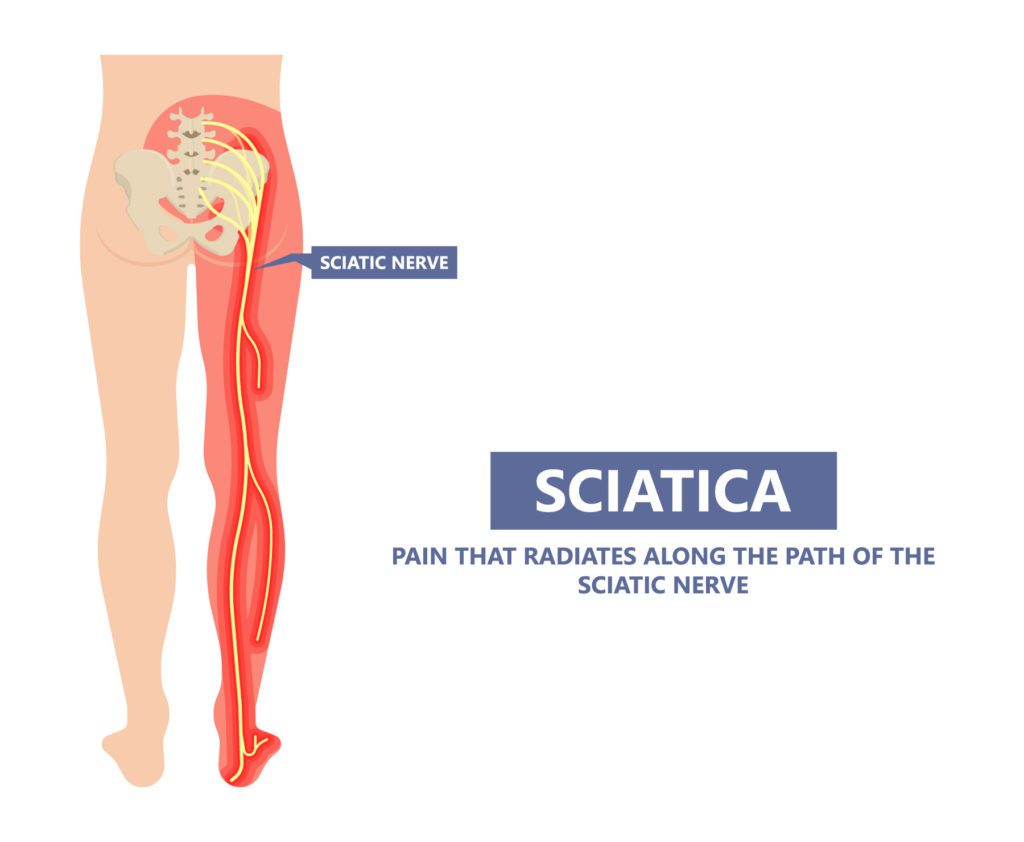Understanding Sciatica and Its Daily Impact on Sciatica Sufferers
Agony for Sciatica Sufferers
Sciatica is a condition characterised by pain radiating along the path of the sciatic nerve, which extends from the lower back through the hips and buttocks and down each leg.
This pain can range from a mild ache to a sharp, burning sensation or even severe discomfort that can make even the simplest tasks feel daunting.
For many, sciatica not only affects physical health but also disrupts daily life, making activities like walking, sitting, or even sleeping a challenge.
The persistent pain and discomfort can lead to decreased productivity, increased stress, and a diminished quality of life.
Given the widespread impact of sciatica, finding effective relief is crucial. While there are various treatment options available, chiropractic care has emerged as a highly effective and non-invasive approach to managing and alleviating sciatica symptoms.
This post delves into how chiropractic care works to provide relief for sciatica sufferers, exploring the techniques used, the science behind it, and real-life success stories.
Whether you’re currently struggling with sciatica or looking to understand more about this condition and its treatments, read on to discover how chiropractic care could be the solution you’ve been searching for.
Causes of Sciatica
Several conditions can lead to sciatica by putting pressure on the sciatic nerve. The most common causes include:
- Herniated Disc: When a spinal disc herniates or bulges out, it can compress the sciatic nerve roots.
- Spinal Stenosis: A narrowing of the spinal canal can put pressure on the nerves, including the sciatic nerve.
- Degenerative Disc Disease: The wear and tear of spinal discs over time can cause inflammation or nerve compression.
- Spondylolisthesis: This occurs when a vertebra slips out of place, potentially compressing the sciatic nerve.
- Piriformis Syndrome: The piriformis muscle, located in the buttocks, can irritate the sciatic nerve if it spasms or tightens.
- Injury or Trauma: Any injury to the lower back or pelvis can affect the sciatic nerve.
Symptoms of Sciatica
Sciatica symptoms can vary widely, but they typically include:
- Pain: This can range from a mild ache to a sharp, burning sensation. Pain often starts in the lower back and radiates down the buttock and the back of the leg.
- Numbness and Tingling: These sensations often occur along the nerve path, particularly in the leg and foot.
- Weakness: The affected leg may feel weak, making it difficult to move or stand up.
- Worsening Pain with Movement: Sitting, standing, or walking for long periods can exacerbate the pain.
The sciatic nerve runs from the lower back, through the buttocks, and down the legs. Common areas affected by sciatica pain are highlighted.
How chiropractic care can effectively address these symptoms and provide relief for sciatica sufferers
Chiropractic care is often successful in providing relief from sciatica for several reasons:
- Spinal Adjustments: Chiropractors perform spinal adjustments or manipulations to correct misalignments in the spine (subluxations), which can relieve pressure on the sciatic nerve. By realigning the spine, these adjustments can help reduce nerve irritation and inflammation, leading to pain relief.
- Targeted Care: Chiropractic care involves personalised care plans tailored to the specific needs of the patient. Chiropractors assess the underlying causes of sciatica and use a variety of techniques, such as adjustments, exercise and ergonomic recommendations to address the root of the problem.
- Non-Invasive Approach: Chiropractic care is a non-invasive treatment option that does not involve surgery or medication. This can be particularly appealing to patients looking for a more natural approach to pain relief. The non-invasive nature of chiropractic care also means there are fewer risks and side effects compared to surgical interventions.
- Improved Mobility and Function: Chiropractic adjustments can improve joint mobility and function, which can be particularly beneficial for patients with sciatica. By enhancing the movement of the spine and surrounding muscles, chiropractic care can help reduce muscle tension, improve posture, and facilitate better overall movement patterns. This can lead to a decrease in pain and an increase in the quality of life for individuals suffering from sciatica.
- Enhanced Nervous System Function: Chiropractic care focuses on the relationship between the spine and the nervous system. By improving spinal health through adjustments, chiropractors can enhance the overall function of the nervous system. Better nervous system function can lead to more effective communication between the brain and the rest of the body, which can improve healing processes and reduce symptoms associated with sciatica.
Chiropractic Success Stories from the office of Optimal Chiropractic in Ballincollig
The Research behind Chiropractic and Finding Relief from Sciatica
For those with disc herniation and sciatica, the study I mention above will interest you. For full research paper by Dr. J. Chestnut check out this link.
The Myths and Facts of Chiropractic
Chiropractic care has been the subject of various misconceptions over the years. It’s important to separate fact from fiction to understand the true benefits and capabilities of this healthcare approach. In this section, we will address some of the most common myths about chiropractic care and provide factual information to counter these misunderstandings.
Myth 1: Chiropractic Care Is Not Scientific
Fact: Chiropractic care is based on scientific principles and extensive research. Numerous studies have shown the effectiveness of chiropractic adjustments in treating musculoskeletal issues, including sciatica.
Myth 2: Chiropractic Adjustments Are Dangerous
Fact: Chiropractic adjustments are safe when performed by a licensed and trained chiropractor. While any medical treatment carries some risk, the risks associated with chiropractic care are relatively low. Chiropractors are trained to perform adjustments safely and to identify patients who may need a referral to another type of healthcare provider. Additionally, chiropractors use a variety of techniques to accommodate patients’ specific conditions and comfort levels.
Myth 3: Chiropractic Care Is Only for Back Pain
Fact: While chiropractors are well-known for treating back pain, they can address a wide range of musculoskeletal and nervous system issues. Chiropractic care can help with conditions such as neck pain, headaches, joint problems, and even certain types of chronic pain. For sciatica, chiropractic adjustments can alleviate pain, reduce inflammation, and improve mobility.
Myth 4: Once You Start Chiropractic Care, You Have to Keep Going Forever
Fact: The frequency and duration of chiropractic care depend on the individual patient’s condition, goals, and response to treatment. Some patients may require only a few sessions to achieve relief, while others might benefit from ongoing maintenance care. Chiropractors work with patients to develop personalised care plan that fit their specific needs and health goals.
Myth 5: Chiropractic Adjustments Are Painful
Fact: Most patients find chiropractic adjustments to be comfortable and pain-relieving. Some may experience mild soreness after an adjustment, similar to the sensation after exercise, but this usually resolves quickly. Chiropractors use precise and controlled movements to ensure the comfort and safety of their patients.
Myth 6: Chiropractors Are Not Real Doctors
Fact: Chiropractors are licensed healthcare professionals who hold a Doctor of Chiropractic (D.C.) degree. Their education includes extensive training in anatomy, physiology, neurology, and other medical sciences, as well as hands-on clinical experience.
Embracing Chiropractic Care for Sciatica Relief
By addressing the root causes of sciatica and promoting overall spinal health, chiropractic care not only alleviates pain but also enhances mobility and improves the quality of life.
Additionally, we’ve debunked common myths and misconceptions about chiropractic care, highlighting the scientific foundation, safety, and broad scope of this healthcare discipline.
Chiropractors are trained professionals who provide evidence-based care tailored to each patient’s unique needs.
If you or someone you know is suffering from sciatica, consider exploring chiropractic care as a viable option for relief.
If you are in the Cork area we can help. Optimal Chiropractic is based in Ballincollig near Cork City. Call us on 021 487 8465, we would be delighted to help.















